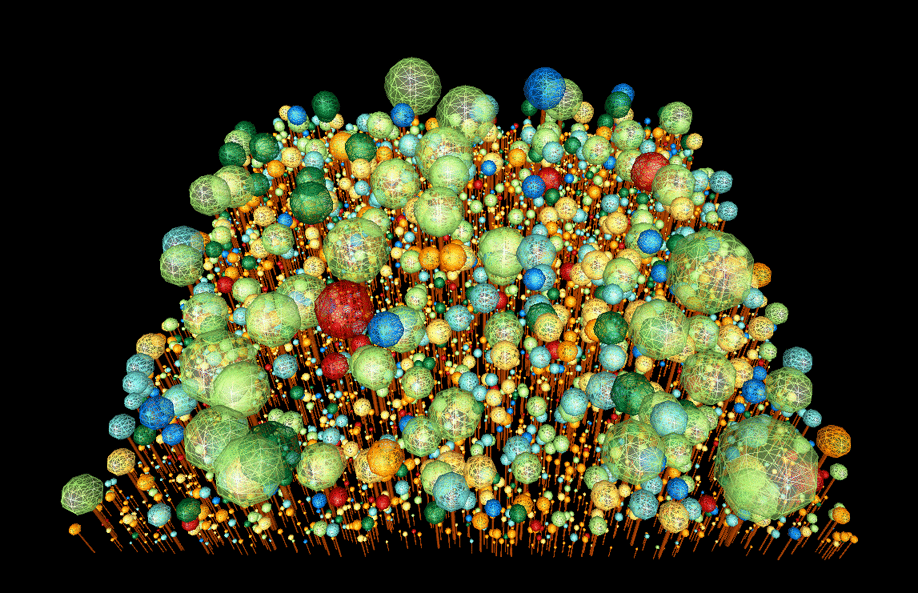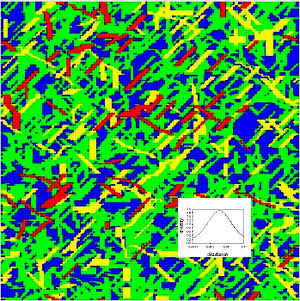Disturbances and Fragmentation

Many ecosystems are influenced by disturbances such as e.g. land-use, fragmentation, fire, floods or storms. Despite the fundamental relevance of these disturbances for the dynamics, structure, diversity and functioning of these ecosystems we still lack a comprehensive understanding how vulnerable and sensitive disturbed ecosystems are to changes in their disturbance regime. In particular the interaction of different disturbances and between disturbances and other stress factors (such as habitat loss, pollution or temperature change) is not yet well understood and studied. However, alterations or combinations of disturbances and multiple stresses are highly relevant in the face of climate change.
The last decades have shown that many species up to communities and ecosystems are not able to cope with such combined changes.
In addition, it has been shown that different ecological communities respond in different ways and with different, positive or negative,
consequences.

Our department meets these challenges by adressing the following issues:
- Analysis of multiple disturbances (logging, fire, landslides, storms, fragmentation) and climatic stressors (drought, CO2, increased temperatures) on the structure and dynamics of forests
- Impact of management (mowing, fertilization, irrigation) and climatic stressors (drought, CO2, increased temperatures) on the structure and dynamics of grasslands
- Geographic range shifting of species and communities in dynamic landscapes
- Impact of environmental stress and disturbances on the stability and functioning of microbial ecosystems
- Modelling the isolated and combined effect of stressors on honeybee colonies
- Population and community dynamics under different disturbance regimes
- Functional resilience of aquatic ecosystems under multiple stressors
- Ecological-Economic Modelling for grassland species conservation impacted by land use
Selected Publications
- Bauer, L., Huth, A., Bogdanowski, A., Müller, M., Fischer, R. (2024):
Edge effects in Amazon forests: Integrating remote sensing and modelling to assess changes in biomass and productivity
Remote Sens. 16 (3), art. 501 10.3390/rs16030501 - Holtmann, A., Huth, A., Bohn, F., Fischer, R. (2024):
Assessing the impact of multi-year droughts on German forests in the context of increased tree mortality
Ecol. Model. 492 , art. 110696 10.1016/j.ecolmodel.2024.110696 - Hiltner, U., Huth, A., Fischer, R. (2022):
Importance of the forest state in estimating biomass losses from tropical forests: combining dynamic forest models and remote sensing
Biogeosciences 19 (7), 1891 - 1911 10.5194/bg-19-1891-2022 - Fischer, R., Taubert, F., Müller, M.S., Groeneveld, J., Lehmann, S., Wiegand, T., Huth, A. (2021):
Accelerated forest fragmentation leads to critical increase in tropical forest edge area
Sci. Adv. 7 (37), eabg7012 10.1126/sciadv.abg7012 - Schmid, J.S., Huth, A., Taubert, F. (2021):
Influences of traits and processes on productivity and functional composition in grasslands: A modeling study
Ecol. Model. 440 , art. 109395 10.1016/j.ecolmodel.2020.109395 - Galic, N., Sullivan, L.L., Grimm, V., Forbes, V.E. (2018):
When things don’t add up: quantifying impacts of multiple stressors from individual metabolism to ecosystem processing
Ecol. Lett. 21 (4), 568 - 577 10.1111/ele.12923 - Gérard, M., Vanderplanck, M., Franzén, M., Kuhlmann, M., Potts, S.G., Rasmont, P., Schweiger, O., Michez, D. (2018):
Patterns of size variation in bees at a continental scale: does Bergmann’s rule apply?
Oikos 127 (8), 1095 - 1103 10.1111/oik.05260 - Grosfeld, K., Lemke, P., Braesicke, P., Brauer, A., Dethloff, K., Kunz, M., Latif, M., Ratter, B., Sachs, T., Schmid, H.P., Treffeisen, R., Schwarze, R. (2016):
The Helmholtz Regional Climate Initiative REKLIM from a polar perspective – a preface
Polarforschung 85 (2), 65 - 68 10.2312/polfor.2016.001 - Horn, J., Becher, M.A., Kennedy, P.J., Osborne, J.L., Grimm, V. (2016):
Multiple stressors: using the honeybee model BEEHAVE to explore how spatial and temporal forage stress affects colony resilience
Oikos 125 (7), 1001 - 1016 10.1111/oik.02636 - Urban, M.C., Bocedi, G., Hendry, A.P., Mihoub, J.-B., Pe'er, G., Singer, A., Bridle, J.R., Crozier, L.G., De Meester, L., Godsoe, W., Gonzalez, A., Hellmann, J.J., Holt, R.D., Huth, A., Johst, K., Krug, C.B., Leadley, P.W., Palmer, S.C.F., Pantel, J.H., Schmitz, A., Zollner, P.A., Travis, J.M.J. (2016):
Improving the forecast for biodiversity under climate change
Science 353 (6304), aad8466-1 - aad8466-9 10.1126/science.aad8466
